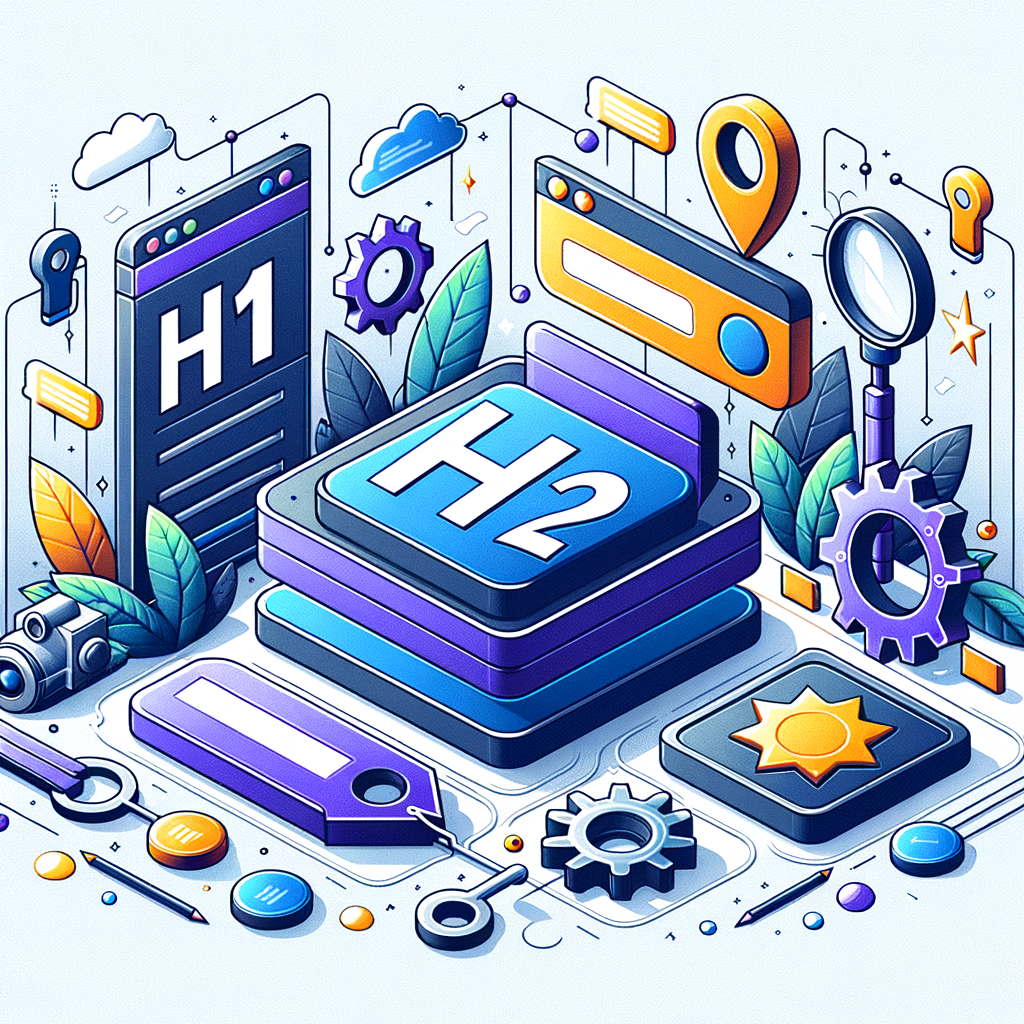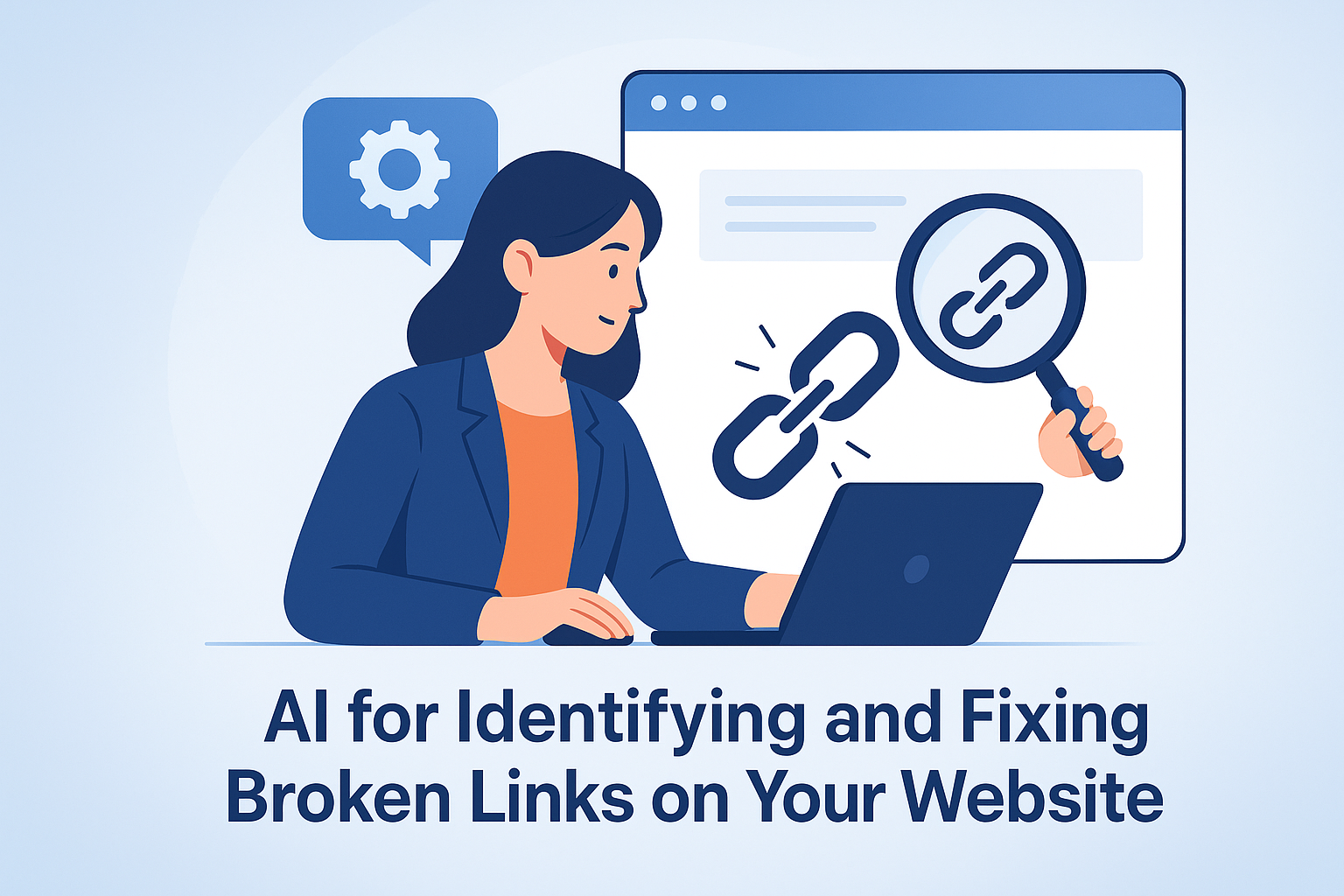When it comes to SEO and user experience, header tags do far more than organize content—they signal relevance, intent, and hierarchy to both users and search engines.
Poor or inconsistent header tags can lead to:
- Missed keyword opportunities
- Weaker on-page SEO signals
- Confusing user experience and low dwell time
- Poor accessibility and mobile readability
With AI-powered tools, you can now automatically create and optimize H1, H2, and H3 headers that are keyword-rich, hierarchy-smart, and uniquely tailored to your content.
In this guide, you’ll learn how to:
- Use DIYSEO GPT to find pages with weak or missing headers
- Use the SEO AI Writer to generate and optimize header tags
- Reinforce topical authority with internal linking and backlinks via the Link Marketplace
Why Header Tags Matter for SEO and UX
Header tags are essential HTML elements that organize and label content. They serve two vital functions:
- For Search Engines
Header tags help Google understand the topic structure and importance of each section. - For Users
Headers improve readability and scanning, especially on mobile, by breaking content into digestible chunks.
Header Tag Hierarchy:
| Tag | Purpose |
|---|---|
| H1 | Main topic of the page (used once) |
| H2 | Major subtopics or sections |
| H3 | Sub-sections under each H2, used for supporting details |
Search engines expect a logical, clean hierarchy. Broken structure = broken rankings.
Common Header Mistakes (That AI Can Fix)
| Mistake | Why It Hurts |
|---|---|
| Duplicate H1s | Confuses search engines and users |
| Overstuffed H2s | Keyword stuffing flags spammy intent |
| No clear hierarchy | Weakens content comprehension |
| Missing headers | Hurts skimming and accessibility |
| Boring, generic phrasing | Fails to capture attention or match search intent |
The SEO AI Writer fixes all of these—at scale and in seconds.
Step-by-Step: How to Create Better Headers with DIYSEO
✅ Step 1: Audit Current Headers Using DIYSEO GPT
Begin with the Layout & Readability Review prompt in DIYSEO GPT to analyze header usage across key pages.
Ask in Chat History:
“Which blog posts or service pages have missing or poorly structured H1, H2, or H3 tags?”
You’ll get a prioritized list of content to update, especially pages with:
- Low readability
- Weak internal structure
- Missed keyword alignment opportunities
Also run Top Performing Pages to identify high-traffic pages that deserve headline upgrades for better CTR and UX.
✅ Step 2: Generate H1, H2, and H3 Tags with SEO AI Writer
Once you know which pages need updates, use the SEO AI Writer to rewrite or create structured headings.
Prompt Example:
“Create a keyword-optimized H1, and 5 H2s with 2 supporting H3s each for a blog post titled ‘AI SEO Tools for Agencies.’ Include variation and strong formatting.”
The writer will return:
- A unique, engaging H1 (one per page)
- Topic-relevant H2s that match user intent
- Contextual H3s that support deeper engagement and clarity
Example Output:
H1:
Top AI SEO Tools for Agencies in 2024: Save Time, Scale Results
H2:
- Why AI Is Reshaping SEO for Agencies
- Key Features to Look for in AI SEO Tools
- Best AI Platforms for Content Optimization
- Automating SEO Audits with Machine Learning
- Choosing the Right Tool for Your Agency’s Needs
H3s under “Best AI Platforms…”
- Surfer SEO
- Frase
- DIYSEO GPT
- Clearscope
- Outranking
This structure improves readability, snippet eligibility, and on-page keyword coverage.
✅ Step 3: Tailor Header Tags to Match Search Intent
Headers should match user intent, not just contain keywords.
Ask SEO AI Writer:
“Rewrite this H2 to match informational intent for the keyword ‘AI SEO audit process.’ Make it benefit-driven and engaging.”
AI Output:
How to Run an AI-Powered SEO Audit in Under 30 Minutes
Repeat this across your content for improved alignment with what users—and Google—are looking for.
✅ Step 4: Reformat Long-Form Content with Hierarchical Headings
Use the SEO AI Writer to restructure older content that lacks proper H2s and H3s.
Prompt:
“Reformat this 2,000-word article by organizing it under one H1, five H2s, and include H3s under sections that list tools or steps.”
This ensures each section:
- Has a logical entry point
- Is clearly labeled for user scanning
- Supports semantic search engines like Google and Bing
✅ Step 5: Insert Internal Links in Headers (Carefully)
Internal links in headers are powerful but should be used sparingly and contextually.
Prompt SEO AI Writer:
“Add a smart internal link to /ai-content-calendar in an H3 about scheduling AI-written content. Use anchor text ‘AI content planning tool.’”
This increases relevance and helps with crawl path logic.
Best Practices for SEO-Friendly Header Tags
| Header Tag | Optimization Tip |
|---|---|
| H1 | Use once per page, front-load primary keyword |
| H2 | Cover key subtopics; match long-tail variations |
| H3 | Support H2s with specifics, FAQs, or examples |
| Tone | Use curiosity, value, or benefit language |
| Length | Keep headers under 70 characters where possible |
DIYSEO’s AI tools automatically align your headers to these standards.
Bonus: Use Link Marketplace to Promote Structured Pages
After optimizing your header structure, drive traffic to high-performing, well-structured content using the Link Marketplace.
Strategy:
- Choose your most refined pillar page (e.g., Ultimate Guide to AI SEO Tools)
- Use Link Marketplace to place backlinks from:
- SEO-focused blogs
- Long-form content platforms
- Niche tech publishers with high domain authority
- Highlight clean structure and clear topic hierarchy in guest post or publisher intro
The result? Higher crawl priority, better user engagement, and more featured snippet opportunities.
Real-World Example: Header Optimization for Engagement
Problem: A SaaS blog ranked well for “AI SEO strategy” but had a 72% bounce rate and little featured snippet presence.
DIYSEO Fix:
- Ran Layout & Readability Review → Found that content had only one H1 and no H2/H3 structure
- Used SEO AI Writer to:
- Rewrite intro
- Generate H2s for major sections
- Add H3s to product reviews and checklist steps
- Built 3 backlinks via Link Marketplace from strategy-focused SEO blogs
Results:
- Bounce rate dropped to 44%
- Page secured a featured snippet for “how AI improves SEO”
- Average scroll depth increased by 2.5x
- 37% increase in organic traffic within 30 days
Final Thoughts
Your header tags are the backbone of your content experience—for users, search engines, and accessibility tools.
With DIYSEO, you can:
- Identify weak headers using GPT-powered audits
- Create structured, keyword-rich headings with SEO AI Writer
- Promote well-structured pages using the Link Marketplace
Header clarity leads to SEO authority—and AI makes it fast, scalable, and effective.
Frequently Asked Questions
1. How can AI enhance the creation of SEO-friendly header tags?
AI brings a significant advantage to the creation of SEO-friendly header tags by providing data-driven insights into keyword optimization. Algorithms can analyze vast amounts of data quickly, identifying the most relevant keywords that align with search engine algorithms. Moreover, AI tools can cater to the tone and style best fitting your target audience, crafting header tags that are not only SEO-optimized but also engaging and compelling. As AI algorithms continuously learn and update, they ensure your header tags remain effective against the ever-evolving search engine optimization landscape. AI can also offer predictive analytics, giving a glimpse into future trends and the kind of header tags that will yield better results, ensuring your content stays ahead of the curve.
2. What role do header tags play in organizing content and improving SEO?
Header tags are integral to both the organization of your content and its visibility on search engines. They serve as hierarchical signals that not only divide your content into digestible sections but also help search engines understand the structure and context of your webpage. Essentially, they guide both users and search engines to the essential parts of your content. For SEO, header tags (H1, H2, H3, etc.) are crucial because they support keyword placement, which is a direct factor in search engine ranking algorithms. By strategically placing primary keywords in your H1 and secondary keywords in H2s and H3s, AI can guide you in crafting header tags that improve your rankings. They create a roadmap for search bots that crawl through the webpage, informing them about what each section covers in terms of keyword presence and relevance.
3. Can AI help in ensuring uniqueness in header tags and prevent duplication?
Absolutely, AI is an excellent ally when it comes to ensuring uniqueness in header tags. Duplicate content is a critical concern for SEO experts as it can lead to penalties from search engines. AI technologies are equipped to identify duplicate content quickly and effectively and can suggest alternative phrasing or synonyms to ensure your header tags are unique. Furthermore, AI can analyze what your competitors are doing, helping you craft header tags that are not only unique to your brand but also distinctive in your industry. By using natural language processing (NLP) capabilities, AI can analyze the semantic essence of your content and generate unique header tags that maintain contextual relevance while avoiding repetition.
4. How do AI technologies determine the best keywords for header tags?
The power of AI lies in its ability to process and analyze large volumes of data far beyond human capability. AI technologies utilize sophisticated algorithms to perform keyword research by analyzing search trends, competitor keywords, and user intent. AI-powered tools such as machine learning and neural networks decode patterns over time, refining keyword selections to stay relevant to current trends. By integrating AI insights, you can use algorithms to target specific audience needs, aligning your header tags keywords with terms that are being actively searched for. AI tools, such as Google’s BERT or GPT, are even capable of understanding nuances in user intent, leading to a deeper understanding of what makes a keyword effective for your header tags.
5. How can AI-generated header tags improve user engagement and experience?
AI-generated header tags contribute to an enhanced user experience by ensuring the content is organized, clear, and directly relevant to what the user is searching for. By analyzing behavioral data, AI tools can predict what readers are most interested in and structure the header tags accordingly. This not only retains user attention but encourages them to further engage with your content. The personalization factor introduced by AI allows for creating header tags that resonate with specific target audiences, addressing their specific inquiries or needs directly and efficiently. By crafting content that speaks directly to the user’s interests or solving particular problems, AI-generated header tags improve user satisfaction and engagement, leading to increased on-page time and reduced bounce rates, which in turn positively influence SEO rankings.



